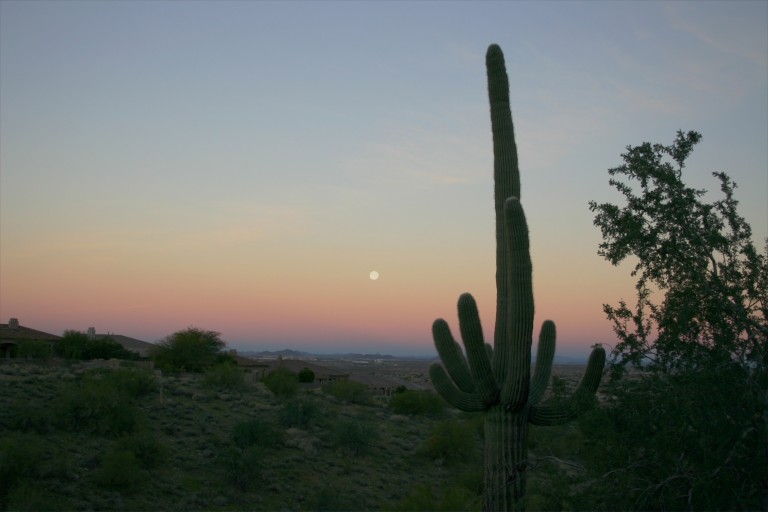
The Belt of Venus is an atmospheric phenomenon caused by the backscattering of reddened light from the rising sun or the setting sun. During sunrise or sunset, a rose-colored or pinkish anti-twilight arch is visible above the horizon in the opposite direction from the sun. Specifically, this anti-twilight arch appears above the western horizon at sunrise and above the eastern horizon at sunset. In addition to being known as the Belt of Venus, it is also sometimes called Venus's Girdle. According to Wikipedia, the name traces back to the Victorian era, and it is named after the Roman goddess Venus. Although most people have surely seen this atmospheric effect, it typically goes without being noticed. The scattering of red light by our atmosphere also accounts for the color of the moon during a lunar eclipse.
In this image, the setting full moon appears just above the Belt of Venus. The moon had adorned the sky all night, and was departing the sky in the west as the sun rose in the east to take its place. You can also see earth's shadow as a low, flat, dark blue band on the western horizon just before sunrise. The Belt of Venus provides a pink border that separates the dark shadow band of the earth from the sky above it. The earth's shadow is also referred to as the Twilight Wedge. When the Belt of Venus is visible, the sun is still located below the horizon, which is why the dark band of the sky in the Twilight Wedge is still eclipsed by the earth's shadow. Click here for an image of the Twilight Wedge.
This image was taken from my backyard in Scottsdale, Arizona, and was taken with a Canon EOS Digital Rebel SLR camera.
January 11, 2009
Image by Sid Leach
Scottsdale, Arizona
Recent Images.
Complete list of images.
Description of equipment used to acquire images.
Home
Feedback and comments should go to Sid